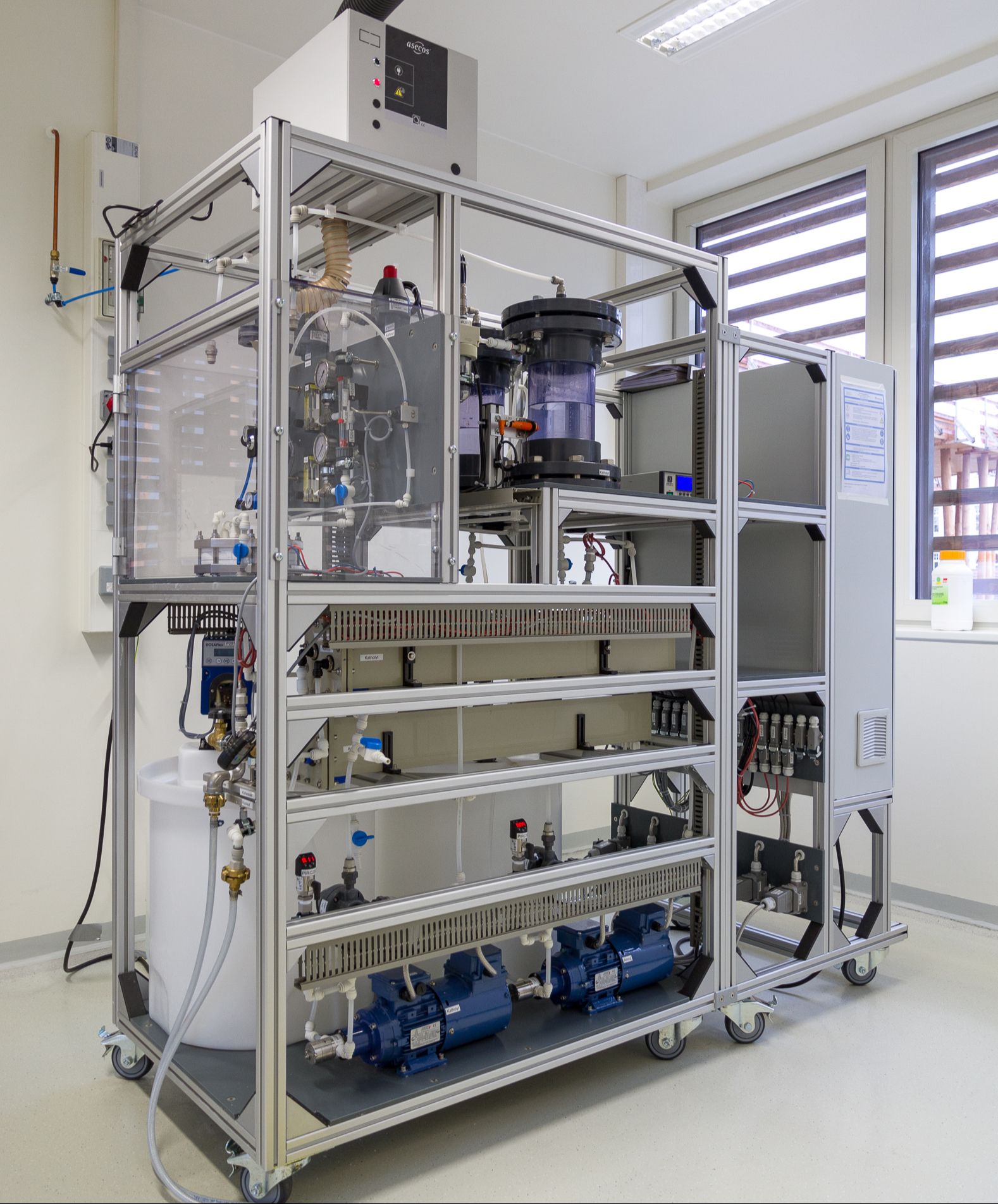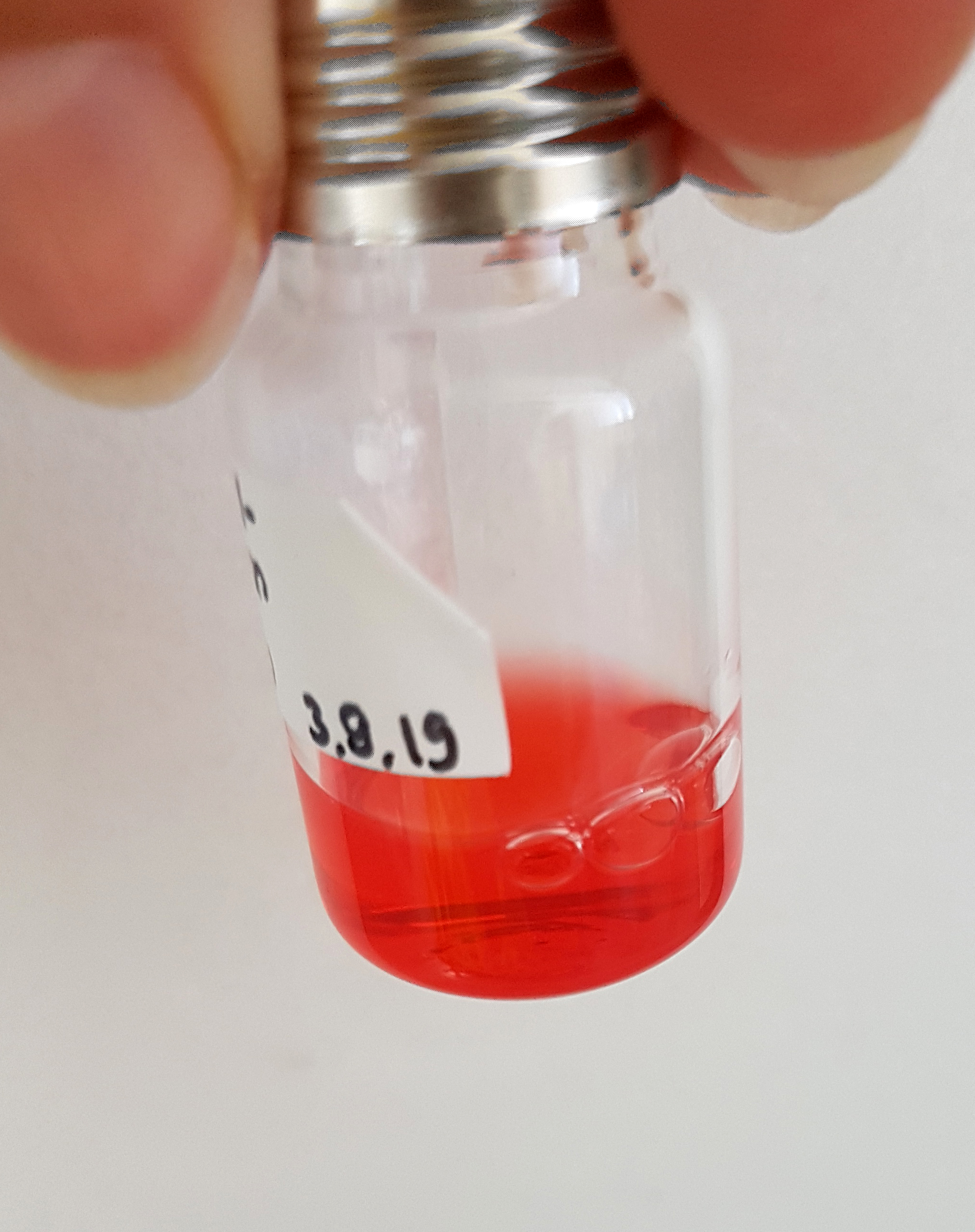Main navigation
CO2 from the air as a raw material for chemicals
A Fraunhofer team has successfully produced a dye using CO2 adsorbed from the air. The aim is to move towards a climate- and resource-friendly circular economy. Chemicals, as well as fuels, can be produced cost-effectively using this process. How does the technical process work, and what opportunities does it open up?
Future technologies for the utilisation of CO2 are currently being sought to counteract climate change. To this end, the Fraunhofer Institute for Interfacial Engineering and Biotechnology (IGB), together with partners from science and industry, has developed a groundbreaking process as part of the EU project CELBICON1): they are converting climate-damaging CO2 into chemicals and fuels in a cost-efficient way.
"National and international agreements are aimed at rapidly increasing the share of renewable energies in the energy mix and curbing CO2 emissions. Industry is under pressure to act," says project manager Lénárd-István Csepei, explaining the motivation behind these new approaches. Thanks to the interdisciplinary research approach, a model process chain has been demonstrated on a pilot scale at Fraunhofer IGB’s Straubing site.
Innovative triple jump: CO2 adsorption, electrochemistry and biotechnology
The IGB team's goal is to develop innovative CO2-to-chemicals technologies that use carbon dioxide to produce intermediates such as formic acid and methanol, which they convert to high-value chemicals through bacterial fermentation.
"Together with our project partner Climeworks, we built a collector system that binds CO2 to a filter after the air is drawn in," says Csepei, describing the first step in the three-stage process chain. The greenhouse gas is then converted via electrochemical reactions to simple C1 intermediates, such as formic acid or methanol. "To achieve efficient conversion of CO2 and high product yield, we first screened different catalysts on the laboratory scale and optimised parameters such as the composition of the electrolytes," adds IGB scientist Dr. Luciana Vieira. With success: the Fraunhofer team was able to optimise and validate the processes using tin-based catalysts and phosphate-based buffer electrolytes.
Csepei highlights the crucial issue: "However, producing these simple compounds in isolation is only economically attractive to a limited extent, due, among other things, to the fluctuating availability of regenerative electrical energy required for the electrochemical process. Significant economic value added is achieved when the simple compounds can be converted into higher-value products at low cost," says Csepei, explaining the innovative third process step. The main players here are bacteria.
Electrosynthesis - an intermediate station
The demonstration plant for converting CO2 into formic acid at the Fraunhofer IGB in Stuttgart is powered by renewable electricity and supervised by Dr. Carsten Pietzka. “Using electrolytic cells, CO2 can be converted via electrochemical reactions to simple compounds, such as formic acid," says the engineer.
Electrosynthesis was demonstrated in a demonstration plant with an electrolytic cell and a 100 cm2 electrode area with 10 l electrolyte volume at a TLR4 technology readiness level2) - and an interesting detail emerged: "It is also possible to integrate electrode stacks. This allows us to increase the production rate of formic acid and develop further electrolytic cells," explains Pietzka.
Bacteria for climate- and cost-efficient product output
The intermediates, either formic acid or methanol, are used as substrates for methylotrophic bacteria. These industrious bacteria use C1 intermediates such as methanol or formic acid as a source of carbon and energy. "In the subsequent chemical-biotechnological process, we can thus produce high-quality chemicals from the products of electrosynthesis," explains project manager Csepei. This is an important aspect because the chemicals generated have a big growth market. Examples include organic acids that can be used as polymer building blocks for plastics production, and isoprene oligomers that can be used as synthetic drop-in fuels.
The IGB scientists use a bacterium called Methylorubrum extorquens for the fermentation process. "This bacterium can convert formic acid to biomass or valuable products via its natural metabolism. As part of the CELBICON project, a red dye was produced and purified via the microbial terpene metabolism," explains Dr. Jonathan Fabarius, the scientist in charge of the process.
A crucial development step here is that the electrolyte used for electrosynthesis, in which the formic acid produced is dissolved, must not be toxic to the bacteria or inhibit enzymes. This means it can be fed into the biotechnological process without prior purification. "Conventional processes often require toxic reagents and solvents in addition to a great deal of energy. With our process, we can produce under energy-efficient and non-toxic conditions, because microbial fermentation takes place in aqueous solutions," adds Fabarius' colleague Vieira.
Fabarius talks about another goal: "We are further optimising the metabolic pathways and enzymes needed for product generation using metabolic engineering." In order to do this, the scientists transfer genes that contain the blueprint for special enzymes into the bacteria. The enzymes that are then produced by the microbes catalyse the production of a specific product. In addition, genes that negatively influence this production process can be specifically suppressed. "We can therefore increase the product range and yield and also the efficiency of the overall process. And this is entirely climate-neutral."
Participating in value-adding carbon capture
Several features in the process point to low investment and operating costs for the entire process chain: the use of CO2 and regenerative energy for the electrosynthesis step ensures that the intermediate products are regenerative. The use of CO2 from decentralised sources has not been worthwhile for previous plants. With the help of the new process chain, chemicals with a high market value can now be produced effectively and economically, including in small quantities.
"Further upscaling is needed for the industrial application of the process, whereby the scaling effects have to be specifically investigated. In order to achieve this, we are currently looking for funding opportunities at the national and international level as well as direct cooperation with industrial partners for catalyst optimisation and process development in fully automated pilot plants," says Csepei, explaining the future potential. In addition, the Fraunhofer team is expanding its product portfolio in the direction of polymer building blocks and is working on the further optimisation of the electrochemical reaction and the microbial production strain.
The Fraunhofer IGB also offers expertise in conducting techno-economic studies, researching and analysing relevant patents, and market research. "We can use studies like this to support companies in technology scouting and in their positioning in the booming field of power-to-X technologies," says Csepei.
Carbon capture and utilisation (CCU) technologies, such as the process developed at the Fraunhofer IGB, are becoming increasingly efficient and affordable: a pioneering approach to a circular economy where CO2 waste is turned into something valuable.
Footnotes:
1) CELBICON (Cost-effective CO2 conversion into chemicals via combination of Capture and ELectrochemical and BIochemical CONversion technologies), https://celbicon.org/: The research was funded under the European Union's Horizon 2020 framework programme for research and innovation for the project period 2016 - 2019.
2) TRL: TRL: Technology Readiness Level for assessing the development status of new technologies. The technologies validated at the IGB with TRL4 are integrated into a technology platform operated at TRL5.

